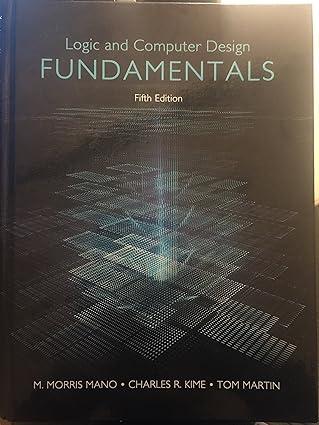To provide uphill running and walking, an exercise treadmill has a grade feature that can be set
Question:
To provide uphill running and walking, an exercise treadmill has a grade feature that can be set from 0.0% to 15.0% in increments of 0.1%. (The grade in percent is the slope expressed as a percentage. For example, a slope of 0.10 is a grade of 10%.) The treadmill has a 10 high by 20 wide LCD dot array showing a plot of the grade versus time. This problem concerns only the vertical dimension of the display. To deine the vertical position of the LCD dot to be illuminated for the current grade, the 151 different grade values (0.0 to 15.0) need to be translated into ten different dot positions, P0 to P9. The translation of intervals of inputs to output values is represented as follows: [(0.0,1.4),0], [(1.5,2.9),1], [(3.0,4.4),2], [(4.5,5.9),3], [(6.0,7.4),4], [(7.5,8.9),5], [(9.0,10.4),6], [(10.5,11.9),7], [(12.0,13.4),8], and [(13.5,15.0),9]. The grade values are represented by a pair of values consisting of a 4-bit binary value 0 through 15 followed by a 4-bit BCD value 0 through 9. For example, 10.6 is represented by (10, 6) [1010, 0110].
Design a special decoder with eight inputs and ten outputs to perform this translation.Use two subcircuits, a 4–to–16-line decoder with the binary value as inputs and D0 through D15 as outputs, and a circuit which determines whether the BCD input value is greater than or equal to 5 (0101) with output GE5. Add additional logic to form outputs P0 through P9 from D0 through D15 and GE5. For example:

Step by Step Answer:

Logic And Computer Design Fundamentals
ISBN: 9780133760637
5th Edition
Authors: M. Morris Mano, Charles Kime, Tom Martin





